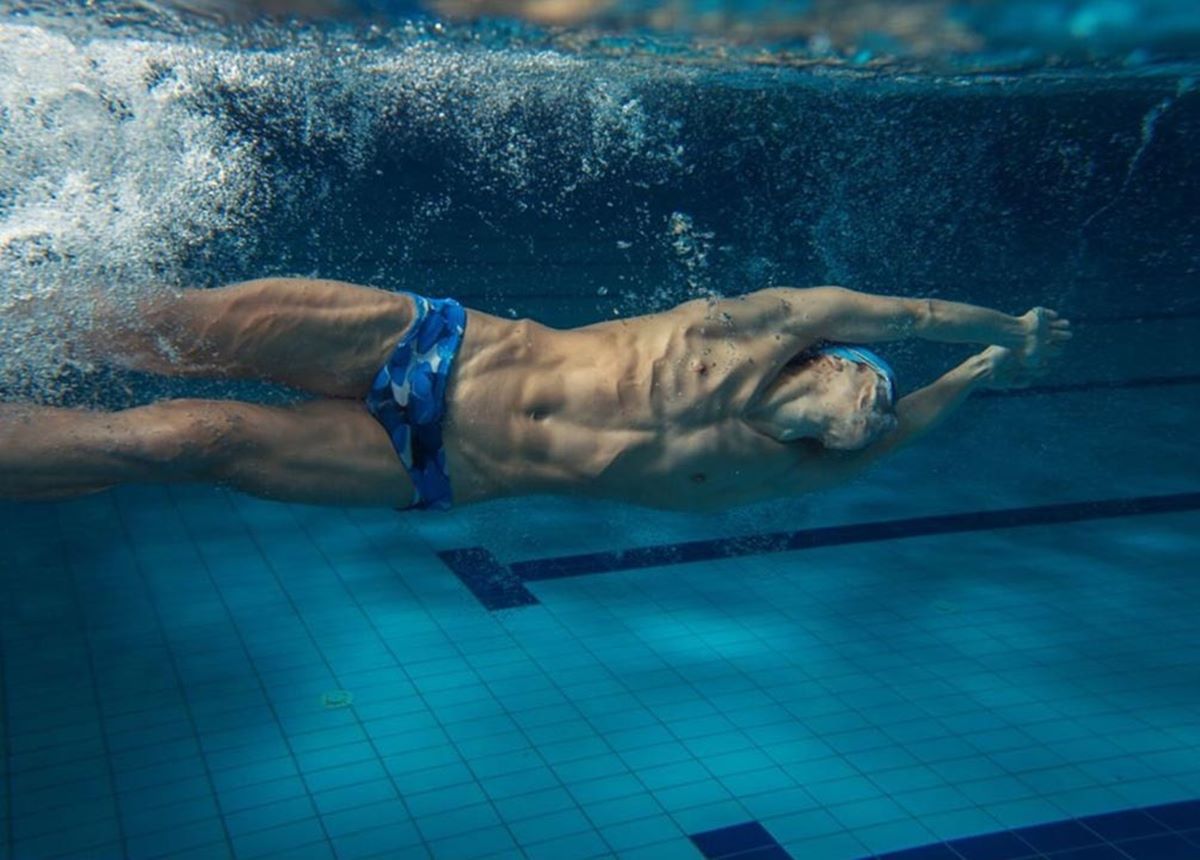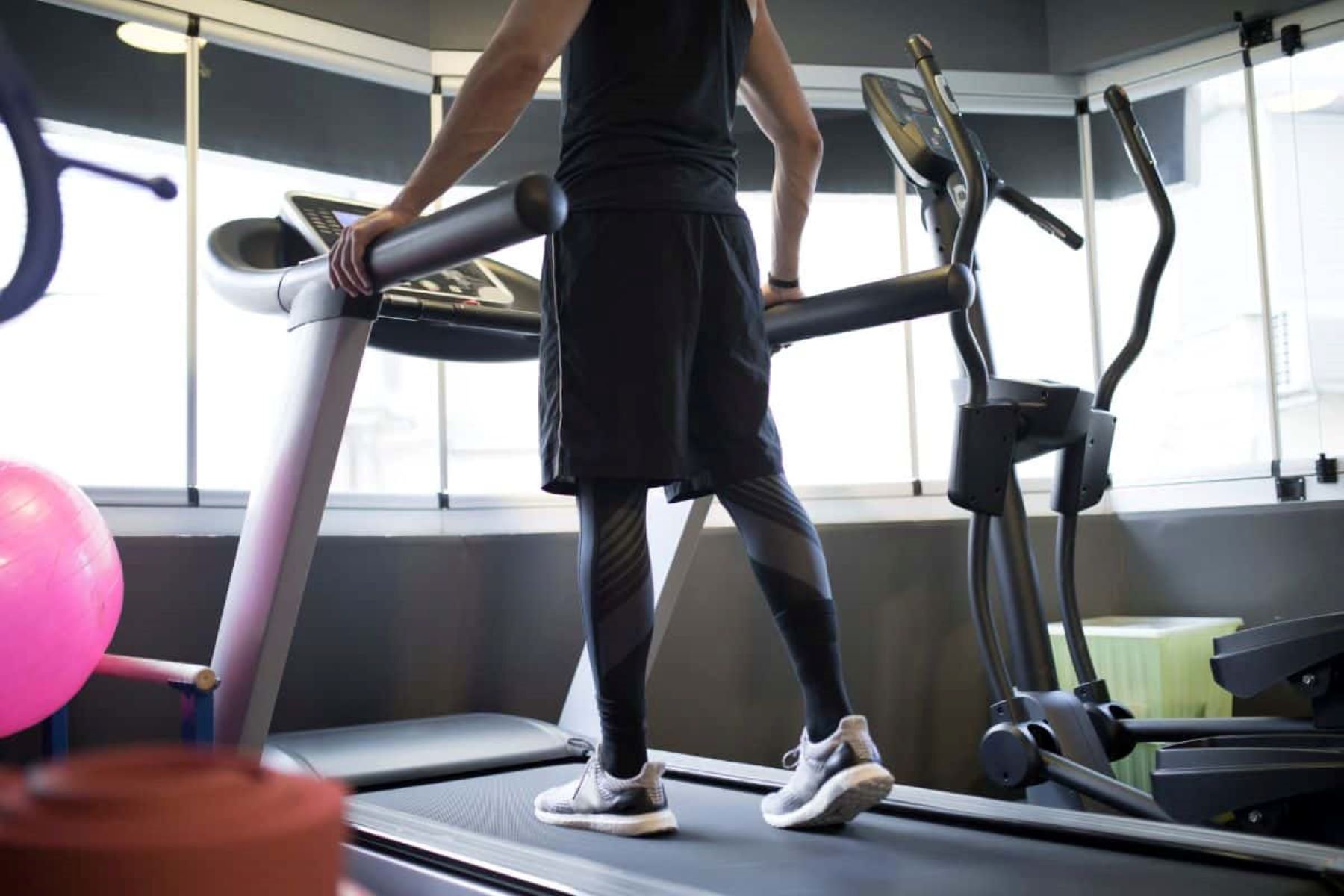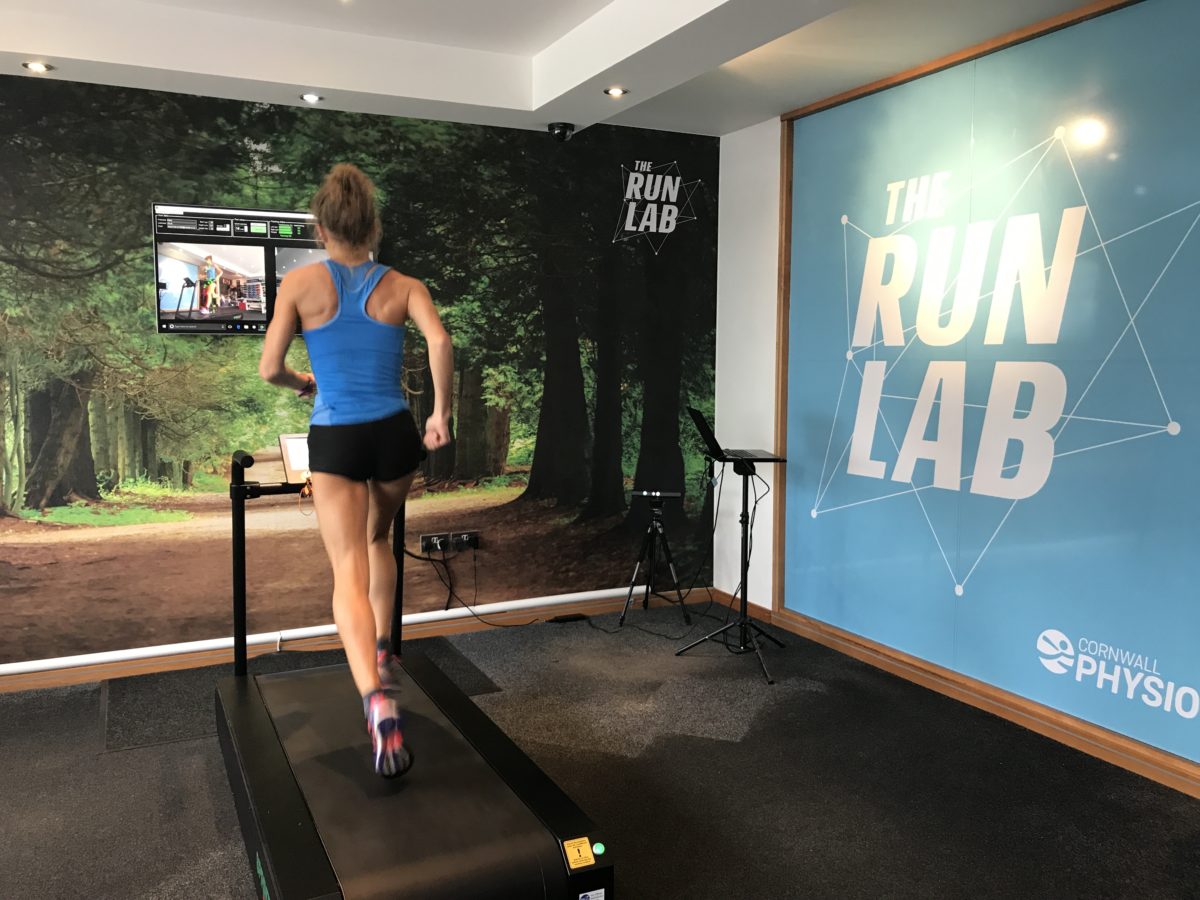Home>Misc>Featured>What Is The Correct Long Distance Running Form


Featured
What Is The Correct Long Distance Running Form
Modified: January 22, 2024
Discover the correct long distance running form with our featured guide. Improve your running efficiency and prevent injuries with expert tips and techniques.
Introduction
Long distance running is a popular form of exercise and a challenging sport that requires both physical and mental endurance. Whether you’re a seasoned runner or just starting out, understanding and practicing proper running form is essential for maximizing performance and preventing injuries.
Running with the correct form can help you run more efficiently, reduce the risk of overuse injuries, and improve your overall running experience. In this article, we will explore the components of proper long distance running form and provide tips on how to improve your technique.
Running form refers to the posture, alignment, and movements of the body while running. It involves the coordination of various body parts, including the arms, legs, torso, and breathing. When these elements are properly aligned and synchronized, it allows for optimal energy transfer and reduces the impact on joints.
Having good running form is not only important for professional runners but also for recreational runners. No matter your level of experience, developing proper form can help you perform better, prevent injuries, and enjoy your runs more.
In the following sections, we will delve into the specific components of correct long distance running form, including body alignment, foot strike, cadence, arm swing, and breathing technique. We will also highlight common mistakes to avoid and offer practical tips for improving your running form.
Importance of Proper Running Form
Proper running form is crucial for long distance runners, as it directly impacts performance, efficiency, and injury prevention. Here are some key reasons why having good form is essential:
1. Improved Performance:
Running with proper form allows your body to work more efficiently, minimizing energy wastage and maximizing your running economy. When your body is aligned correctly, your muscles can generate more power, enabling you to run faster and with less effort.
2. Injury Prevention:
Running with incorrect form can lead to overuse injuries, such as shin splints, knee pain, and stress fractures. By maintaining proper alignment and posture, you can distribute the impact forces evenly throughout your body, reducing the stress on specific joints and muscles.
3. Enhanced Efficiency:
Proper running form helps you use your energy more efficiently, which is especially important during long distance runs. With efficient form, you can maintain a steady pace for a longer time, conserve energy, and avoid unnecessary fatigue.
4. Balanced Muscle Development:
When you maintain proper form, it ensures that all the muscles involved in running are working correctly and evenly. This helps to prevent muscle imbalances and reduces the risk of overuse injuries.
5. Injury Rehabilitation:
If you have suffered from a running-related injury, improving your running form can be an effective rehabilitation strategy. Correcting your form can help alleviate stress on injured areas and promote proper healing.
6. Mental Focus:
Running with proper form requires concentration and mindfulness, which can enhance your mental focus during training or races. By focusing on your form, you can stay present, maintain a consistent rhythm, and develop a stronger mind-body connection.
Overall, maintaining proper running form is crucial for long distance runners to optimize performance, prevent injuries, and ensure a more enjoyable running experience. In the following sections, we will delve into the specific components of correct long distance running form and provide tips on how to improve your technique.
Components of Correct Long Distance Running Form
Proper long distance running form involves the synchronization and alignment of various components, including body posture, foot strike, cadence, arm swing, and breathing technique. Let’s explore each of these components in detail:
1. Body Alignment:
Achieving proper body alignment is the foundation of good running form. Your head, shoulders, hips, and feet should be aligned in a straight line. Maintain a tall posture with a slight forward lean from the ankles, engaging your core muscles to support your spine.
2. Foot Strike:
The foot strike refers to how your foot makes contact with the ground. Aim for a midfoot or forefoot strike, where your foot lands underneath your body, not in front of it. Avoid excessive heel striking, as it can increase the risk of impact-related injuries.
3. Cadence:
Cadence refers to the number of steps you take per minute. Aim for a higher cadence, ideally between 170-180 steps per minute. A faster cadence promotes shorter stride length, reducing the stress on your joints and improving overall efficiency.
4. Arm Swing:
Proper arm swing helps maintain balance and momentum while running. Keep your arms relaxed, bent at around 90 degrees, and swing them forward and backward, not across your body. Avoid excessive arm movement or tensing up, as it can waste energy.
5. Breathing Technique:
It’s important to establish a rhythmic and controlled breathing pattern while running. Breathe deeply from your diaphragm, inhaling through your nose and exhaling through your mouth. Find a breathing pattern that is comfortable for you, matching it with your running cadence.
By paying attention to these key components of correct long distance running form, you can enhance your performance, reduce the risk of injuries, and improve your overall running efficiency. In the following sections, we will discuss common mistakes to avoid and provide tips for improving your running form.
Body Alignment
Proper body alignment is essential for maintaining good running form and preventing injuries. When your body is aligned correctly, it allows for efficient energy transfer, reduces the risk of strain on muscles and joints, and enhances overall running performance. Here are some key aspects to consider for optimal body alignment:
1. Head Position:
Keep your head lifted and eyes focused forward, approximately 20-30 feet ahead. Avoid looking down at your feet, as it can affect your posture and disrupt your balance. A forward gaze helps maintain a neutral spine and promotes a natural forward lean.
2. Shoulders:
Relax your shoulders and avoid hunching or rounding them forward. Keep them down and back, away from your ears. This position opens up your chest, allowing for optimal lung capacity and efficient breathing.
3. Hips:
Your hips should be level and aligned with your upper body. Avoid excessive pelvic tilt, as it can strain your lower back. Engage your core muscles to stabilize your hips and maintain a neutral pelvic position.
4. Arms and Hands:
Keep your arms relaxed and bent at approximately a 90-degree angle. Allow your arms to swing naturally in sync with your stride, moving forward and backward, not crossing your body. Avoid excessive pumping or tensing of the arms, as it can waste energy.
5. Torso and Spine:
Maintain a tall posture with a slight forward lean from your ankles. Engage your core muscles to support your spine and avoid excessive arching or rounding of the back. A neutral spine position promotes proper alignment and helps absorb impact forces.
6. Feet and Legs:
Your feet should land underneath your body, not in front of it, to minimize the risk of overstriding and excessive impact on your joints. Avoid excessive side-to-side movement and keep your legs moving in a straight line, utilizing the power of your glutes and hamstrings.
By maintaining proper body alignment while running, you can run more efficiently, reduce the risk of injuries, and enhance your overall performance. Pay attention to your posture and make necessary adjustments to ensure optimal alignment throughout your run. In the following sections, we will discuss other components of proper long distance running form and provide tips for improvement.
Foot Strike
The way your foot strikes the ground plays a crucial role in your running form and can significantly impact your running efficiency and injury risk. Here’s what you need to know about foot strike:
1. Midfoot Strike:
A midfoot strike occurs when the middle section of your foot, specifically the area around the arch, makes initial contact with the ground. This is often considered the most efficient and natural foot strike pattern for long distance running. It allows for a smooth transition from landing to pushing off, avoiding excessive impact on the heel or forefoot.
2. Forefoot Strike:
In a forefoot strike, the ball of your foot (the area below your toes) lands first on the ground. This foot strike pattern is commonly associated with barefoot running and promotes a shorter stride length, increased cadence, and reduced braking forces. However, it requires strong calf muscles and places more stress on the Achilles tendon and calf muscles, so it may not be suitable for everyone.
3. Heel Strike:
A heel strike involves landing on the heel of your foot first. While this foot strike pattern is common, especially among beginner runners or those with less developed lower leg strength, excessive and overpronounced heel striking can lead to increased impact forces on the joints, potentially leading to injuries such as shin splints or knee pain.
Choosing the Right Foot Strike:
The ideal foot strike pattern may vary from person to person. It’s essential to listen to your body and find what feels most comfortable and natural for you. Some runners naturally have a midfoot or forefoot strike, while others may naturally have a heel strike. However, it’s generally recommended to strive for a midfoot or forefoot strike to avoid excessive impact on the joints and to promote efficient energy transfer.
Transitioning to a New Foot Strike:
If you currently have a heel strike and decide to transition to a midfoot or forefoot strike, it’s important to do so gradually. Abruptly changing your foot strike pattern can lead to strain on different muscles and tissues, increasing the risk of injury. Gradually introduce shorter periods of running with the new foot strike pattern and gradually increase as your body adapts.
Remember to listen to your body and make adjustments as needed. Every runner is unique, and what works for one person may not work for another. Experiment with different foot strike patterns and find what suits you best. In the next section, we will discuss another important component of proper long distance running form: cadence.
Cadence
Cadence, also known as stride rate, refers to the number of steps you take per minute while running. It is an essential component of proper long distance running form and can have a significant impact on your running efficiency, speed, and injury prevention. Here are some key points to consider when it comes to cadence:
Why Cadence Matters:
Having a faster cadence has been found to provide several benefits for runners. A higher cadence can help reduce overstriding, improve running economy, and decrease the load on your muscles and joints. It promotes a shorter stride length, which allows for more efficient use of energy and greater forward propulsion.
Optimal Cadence:
An optimal cadence for most long distance runners is generally considered to be around 170-180 steps per minute. This cadence range has been found to result in an efficient running technique and can help minimize the risk of injuries. However, it’s important to note that individual preferences and running styles may vary.
How to Determine Your Cadence:
To determine your current cadence, you can count the number of steps your right foot takes per minute and then double it to get the total steps per minute. Alternatively, you can use a running watch or smartphone app that has a cadence tracker. Monitor your cadence during different running paces to get a better understanding of your individual cadence range.
Improving Your Cadence:
If your cadence falls below the optimal range, you can work on increasing it gradually. Avoid trying to make a sudden and drastic change, as it can lead to muscle fatigue or injury. Instead, focus on small incremental increases over time. One effective method is using a metronome or a cadence-focused playlist to synchronize your steps with the beats per minute.
Finding Your Natural Cadence:
While aiming for an optimal cadence is beneficial, it’s also essential to find a cadence that feels natural and comfortable for you. Some runners naturally have a higher or lower cadence based on their biomechanics and running style. Experiment with different cadence ranges during your training runs to find what works best for you.
Remember that cadence is just one element of proper long distance running form. It should be considered in conjunction with other aspects like foot strike, body alignment, and breathing technique. Focus on finding a cadence that allows you to run comfortably, efficiently, and injury-free. In the next section, we will explore the importance of arm swing in running form.
Arm Swing
Proper arm swing is a crucial component of correct long distance running form. It plays a significant role in maintaining balance, rhythm, and forward momentum. Here are some key points to consider when it comes to arm swing:
1. Relaxed and Bent Arms:
Keep your arms relaxed, loosely bent at approximately a 90-degree angle. Tension in the arms can transfer to other parts of the body and waste energy. Avoid clenching your fists, as it can cause unnecessary tension and tightness.
2. Forward and Backward Movement:
As you run, allow your arms to swing naturally back and forth in synchronization with your stride. The movement should primarily occur in a forward and backward direction, rather than across the body. This helps maintain balance and minimizes wasted energy in lateral movements.
3. Limited Side-to-Side Movement:
Avoid excessive side-to-side movement of the arms. This lateral movement can throw off your body’s alignment and disrupt your running form. Keep your arms close to your sides, allowing them to move in a straight line parallel to your body.
4. Hands and Shoulders:
Your hands should be relaxed, with a gentle cupping shape, as if you were lightly holding a fragile object. Avoid making fists or holding objects while running. Your shoulders should be down and relaxed, not hunched or elevated towards your ears.
5. Cadence Synchronization:
Your arm swing should be coordinated with your running cadence. Aim to sync your arm swing with the opposite leg’s forward motion. This helps promote a smooth and efficient running rhythm, allowing for better overall coordination and balance.
6. Core Engagement:
Engage your core muscles to maintain stability and support your upper body as your arms swing. A strong core helps prevent excessive rotation or leaning, which can negatively impact your running form and energy efficiency.
By paying attention to your arm swing and ensuring it is aligned with your running style, you can enhance your overall running form and efficiency. Practice running with relaxed arms and focus on maintaining proper alignment and synchronization with your cadence. In the next section, we will discuss the importance of breathing technique in long distance running.
Breathing Technique
Proper breathing technique is an often overlooked but essential component of long distance running form. It plays a significant role in optimizing oxygen intake, managing fatigue, and maintaining endurance. Here are some key points to consider when it comes to breathing technique:
1. Deep Diaphragmatic Breathing:
Breathe deeply from your diaphragm instead of shallow chest breathing. This allows for a larger volume of oxygen to be taken in with each breath. When inhaling, focus on filling your belly with air, expanding your diaphragm, and then exhaling fully.
2. Nasal Breathing and Mouth Exhaling:
While running, aim to breathe in through your nose and exhale through your mouth. Breathing in through the nose helps filter and humidify the air, while exhaling through the mouth allows for more efficient release of carbon dioxide. However, if needed, you can switch to mouth breathing during intense or demanding periods of your run.
3. Rhythmic Breathing:
Sync your breathing with your running cadence and find a rhythm that feels comfortable for you. One popular breathing pattern is a 2:2 ratio, where you take two steps while inhaling and then take two steps while exhaling. Experiment with different rhythmic patterns to find the one that works best for you.
4. Relaxation and Control:
As you run, focus on staying relaxed and maintaining control over your breathing. Avoid shallow or rapid breathing, as it can lead to hyperventilation and unnecessary fatigue. Find a pace and breathing rhythm that allows you to stay calm, focused, and in control.
5. Mental Focus:
Breathing can act as an anchor for your focus and mental state while running. Use your breath as a tool to stay present and maintain a positive mindset. Pay attention to the sensation of your breath as it enters and leaves your body, utilizing it as a way to stay connected to the present moment.
6. Practice and Relaxation:
Practice controlled breathing techniques during your training runs to develop better lung capacity and endurance. Additionally, incorporating relaxation techniques such as deep breathing exercises or meditation into your regular routine can enhance your overall breathing control and relaxation during runs.
By implementing proper breathing techniques into your long distance running form, you can optimize oxygen intake, manage fatigue, and enhance your overall running performance. Experiment with different techniques and find what feels most comfortable and effective for you. In the next section, we will discuss common mistakes to avoid in running form.
Common Mistakes in Running Form
When it comes to running form, there are several common mistakes that many runners make. These mistakes can negatively impact performance, increase the risk of injuries, and hinder overall running efficiency. Here are some of the most common mistakes to be aware of:
1. Overstriding:
Overstriding occurs when your foot lands too far in front of your body, causing your heel to hit the ground first. This can lead to a braking effect, increased impact forces, and strains on the joints. Aim for a midfoot or forefoot strike, landing underneath your body to promote a more efficient and less injury-prone stride.
2. Poor Posture:
Running with poor posture, such as a hunched back, rounded shoulders, or forward head tilt, can negatively affect your running form. It can lead to inefficient breathing, limited lung capacity, and strain on the neck, back, and shoulders. Maintain a tall posture with a slight forward lean, engaging your core muscles to support your spine.
3. Inactive Arms:
Running with stiff or inactive arms can throw off your balance and reduce your overall running efficiency. Keep your arms relaxed, bent at around a 90-degree angle, and allow them to naturally swing forward and backward in sync with your stride. Engage your arms to help maintain momentum and rhythm.
4. Excessive Arm Swinging:
While it’s important not to have inactive arms, excessive arm swinging can waste energy and cause unnecessary upper body movement. Aim for controlled and efficient arm swings that move in a forward and backward direction, avoiding excessive side-to-side movement or crossing your body.
5. Heavy Footstrike:
A heavy footstrike, where you stomp your feet down with excessive force, can increase the impact on your joints and lead to overuse injuries. Focus on landing softly and quietly, using your leg muscles to absorb the impact and propel you forward.
6. Inconsistent Cadence:
Running with an inconsistent cadence, such as constantly changing your steps per minute, can disrupt your rhythm and affect your overall running efficiency. Aim for a steady cadence within an optimal range for your body, and practice maintaining it during your runs.
By being aware of these common mistakes and actively working on correcting them, you can improve your running form, reduce the risk of injuries, and enhance your overall running performance. In the next section, we will provide practical tips to help you improve your running form.
Tips for Improving Your Running Form
Improving your running form takes time, practice, and conscious effort. Here are some practical tips that can help you enhance your running form and maximize your performance:
1. Gradual Changes:
When making adjustments to your running form, make changes gradually. Trying to change everything at once can overwhelm your body and increase the risk of injury. Focus on one aspect at a time, such as improving your body alignment or foot strike, before moving on to the next.
2. Video Analysis:
Record yourself running or seek professional help for a video analysis of your running form. This allows you to identify areas that need improvement and helps you visualize how you currently run. Use the feedback to make necessary adjustments and monitor your progress over time.
3. Strength and Flexibility Training:
Incorporate strength and flexibility exercises into your training routine. Strengthening your core, hips, and lower body muscles can improve your stability, balance, and overall running efficiency. Flexibility exercises can help improve your range of motion and reduce the risk of muscle imbalances.
4. Focus on Relaxation:
Stay relaxed while running, especially in your arms, shoulders, and facial muscles. Tension in these areas can interfere with your running form and waste valuable energy. Regularly check-in with your body and release any unnecessary tension as you run.
5. Practice Good Posture:
Maintain good posture throughout your run. Engage your core muscles to support your spine and keep your head aligned with your body. Practicing good posture during your daily activities can also contribute to better posture while running.
6. Vary Your Terrain:
Incorporate different terrains into your training runs. Running on varied surfaces, such as trails, grass, or sand, challenges your muscles in different ways and helps improve your overall balance, stability, and proprioception.
7. Listen to Your Body:
Pay attention to any discomfort or pain you may experience while running. If something doesn’t feel right, listen to your body and adjust accordingly. Consulting with a healthcare professional or a running coach can help identify underlying issues and provide specific guidance for improving your form.
Remember, improving your running form is a continuous process. Be patient with yourself and celebrate small victories along the way. With dedication and practice, you can refine your form, reduce the risk of injuries, and optimize your running performance.
Conclusion
Proper running form is the foundation for an efficient and enjoyable long distance running experience. By incorporating the right techniques, you can enhance your running performance, reduce the risk of injuries, and make your runs more efficient and enjoyable.
In this article, we explored the importance of correct long distance running form, focusing on key components such as body alignment, foot strike, cadence, arm swing, and breathing technique. We discussed common mistakes to avoid and provided practical tips for improving your form.
Remember that every runner is unique, and finding what works best for you may require some experimentation and adjustments. It’s crucial to listen to your body and make gradual changes to avoid overexertion or injury.
By maintaining proper body alignment, practicing an optimal foot strike, syncing your cadence, utilizing efficient arm swing, and employing a controlled breathing technique, you’ll be well on your way to achieving excellent long distance running form.
Consistency and patience are key in refining your running form. As you continue to practice and make incremental improvements, you’ll notice enhanced performance, reduced risk of injuries, and a more enjoyable running experience.
So lace up your shoes, put these tips into action, and embark on your journey to reaching your full running potential with proper long distance running form. Happy running!









